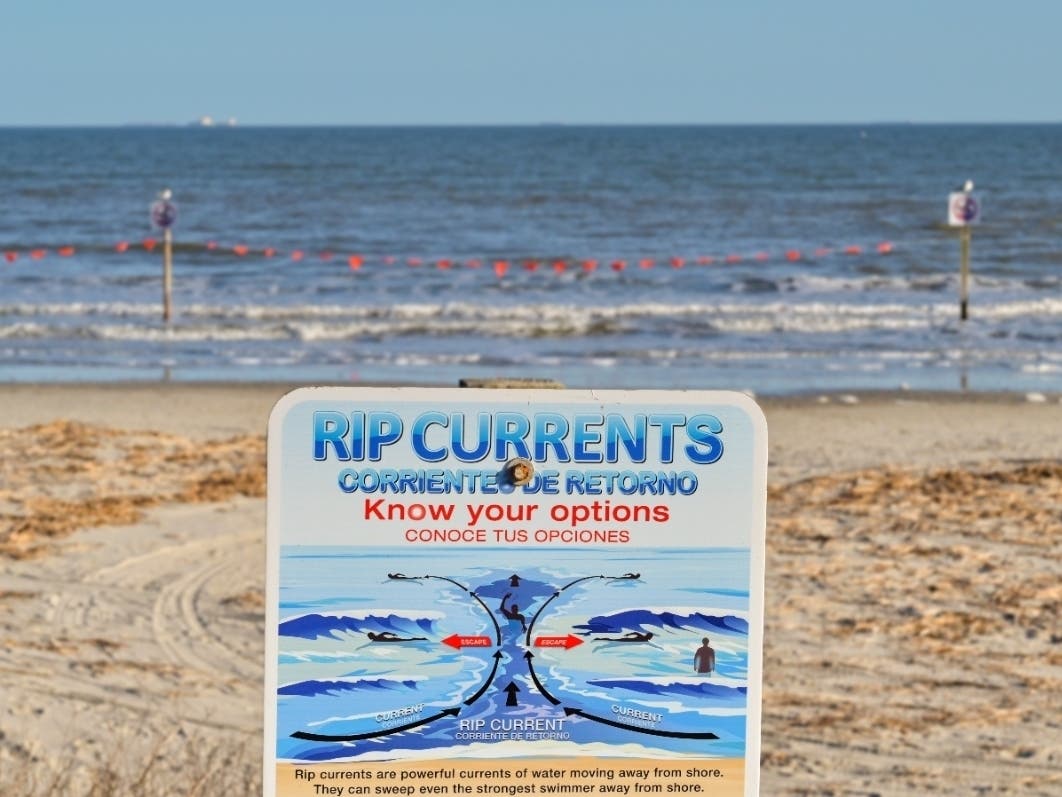Crime & Safety
After Swimmers Rescued From NJ Beach, Here's How To Spot Dangerous Rip Currents
Nineteen people have died so far this year while swimming at U.S. beaches. Here's how to spot a rip current and how to escape one.

NEW JERSEY — Many Garden State residents will likely head to the Jersey Shore this summer, but even the most experienced swimmers should pay attention to surf conditions and know when it's too dangerous to enter the water.
Twenty-three people have died so far this year due to dangerous surf conditions at U.S. beaches, according to a database compiled by the National Weather Service. Each death happened when the swimmer became caught in a rip current — a powerful current that can carry people away from shore and quickly sweep them underwater if they don't know what to do.
While no deaths have been reported in New Jersey, nine people were rescued from the water at a South Jersey beach late last month, including several who were in distress and others who went into the water to help them, according to reports.
Find out what's happening in Across New Jerseywith free, real-time updates from Patch.
Find out what's happening in Across New Jerseywith free, real-time updates from Patch.
The incident happened on June 29 at Ninth Street Beach in Ocean City, NJ.com reported. A lifeguard used a jet ski to rescue the swimmers and at least one person was treated by first responders after they were pulled from the water.
It's unclear whether a rip current contributed to the incident; however, the National Weather Service issued an advisory for a high risk of rip currents along the Jersey Shore the day the incident occurred.
If you're planning a trip to the beach, it's important to know the beach conditions before you go. Knowledge — including how to spot a rip current and how to escape one — can make all the difference between life and death.

How To Spot A Rip Current
According to the National Weather Service, rip currents are strong, narrow, seaward flows of water that extend from close to the shoreline to outside the surf zone. They are found on almost any beach with breaking waves and act as "rivers of the sea," moving sand, marine organisms, and other material offshore (see the above picture.)
While officials say the best way to avoid getting caught in a rip current is always to swim near a lifeguard, a lifeguard may not always be available. The key to safety is understanding what a rip current is and how to spot one.
The following list provides tips on how to best spot rip currents:
- Spotting rip currents from an elevated position overlooking the beach is much easier. This might be from a parking lot, beach access, sand dune or headland.
- Channelized rip currents are the easiest to identify as they typically appear as darker, narrow gaps of water heading offshore between areas of breaking waves and whitewater. They can appear as darker paths heading out through the surf, so look for gaps in the lines of breaking waves.
- Look for narrow regions of choppy, rippled water heading offshore. Waves moving toward shore may steepen due to opposing offshore rip current flows, leading to a different surface water texture.
- Look for plumes of sand or foam offshore of the breakers, often moved away from shore by rip currents.
- Some types of rips, such as flash rips, can appear as narrow sections of turbulent whitewater heading offshore.
- Wear polarized sunglasses to help identify contrasting colors in the water — deep rip current channels stand out as darker water.
- Ask a lifeguard if there are any rip currents and to point them out for you.
Check out this National Oceanic and Atmospheric Administration video on spotting a channelized rip current. See more photos of examples of rip currents.
How To Escape A Rip Current
Here's what National Weather Service officials say swimmers should do if they find themselves caught in a rip current:
- Relax. Rip currents don't pull you under.
- Do not try to swim against a rip current — it will only use up your energy, which you need to survive and escape the rip current.
- Do not try to swim directly toward the shore. Swim along the shoreline until you escape the current's pull. When free from the pull of the current, swim at an angle away from the current toward shore.
- If you can't reach shore, relax, face the shore, and call or wave for help.
- If possible, only swim at beaches with lifeguards.
- If you choose to swim on beaches without a lifeguard, never swim alone. Take a friend and have that person take a cell phone so that person can call 911 for help.
Get more local news delivered straight to your inbox. Sign up for free Patch newsletters and alerts.